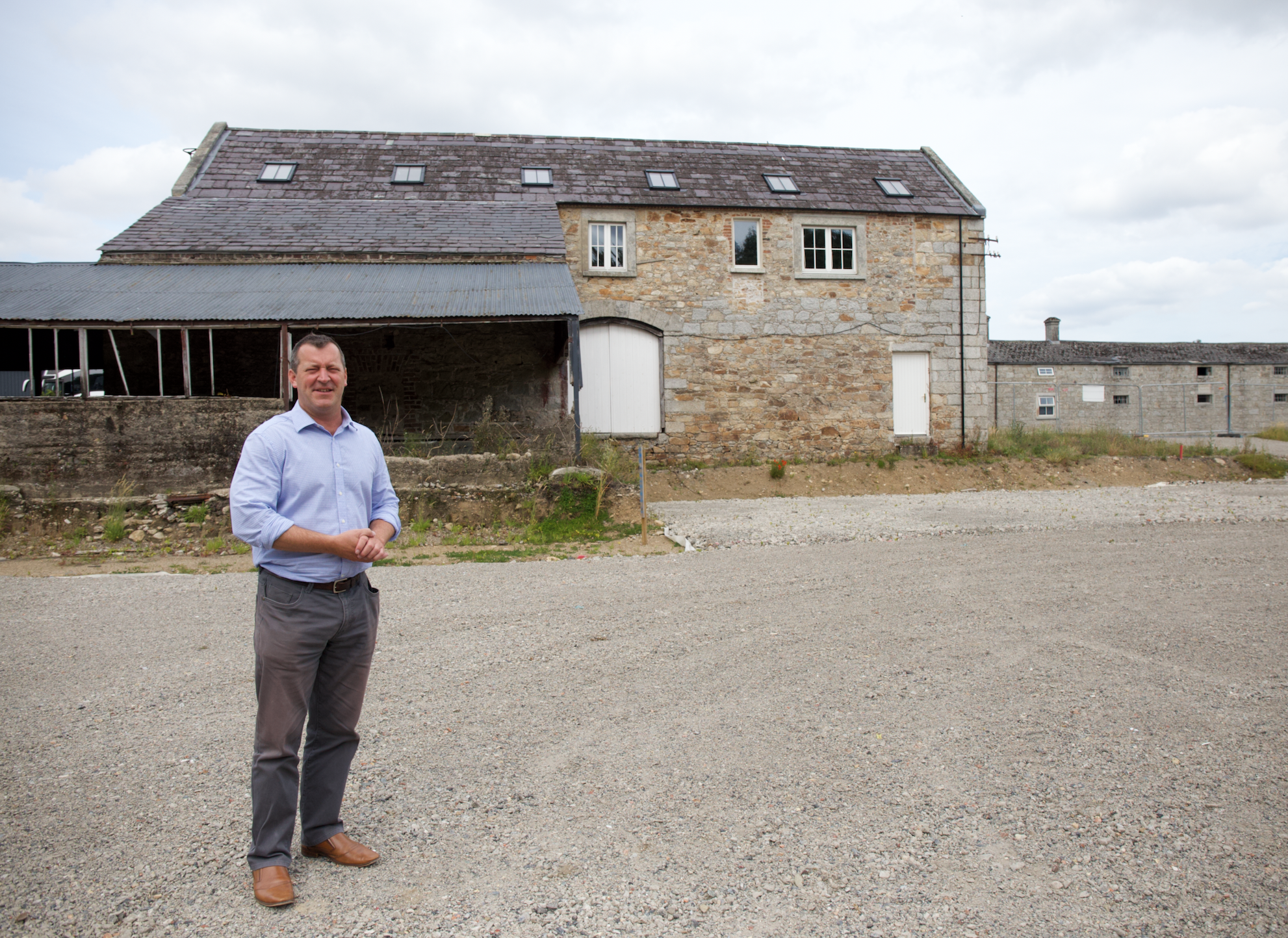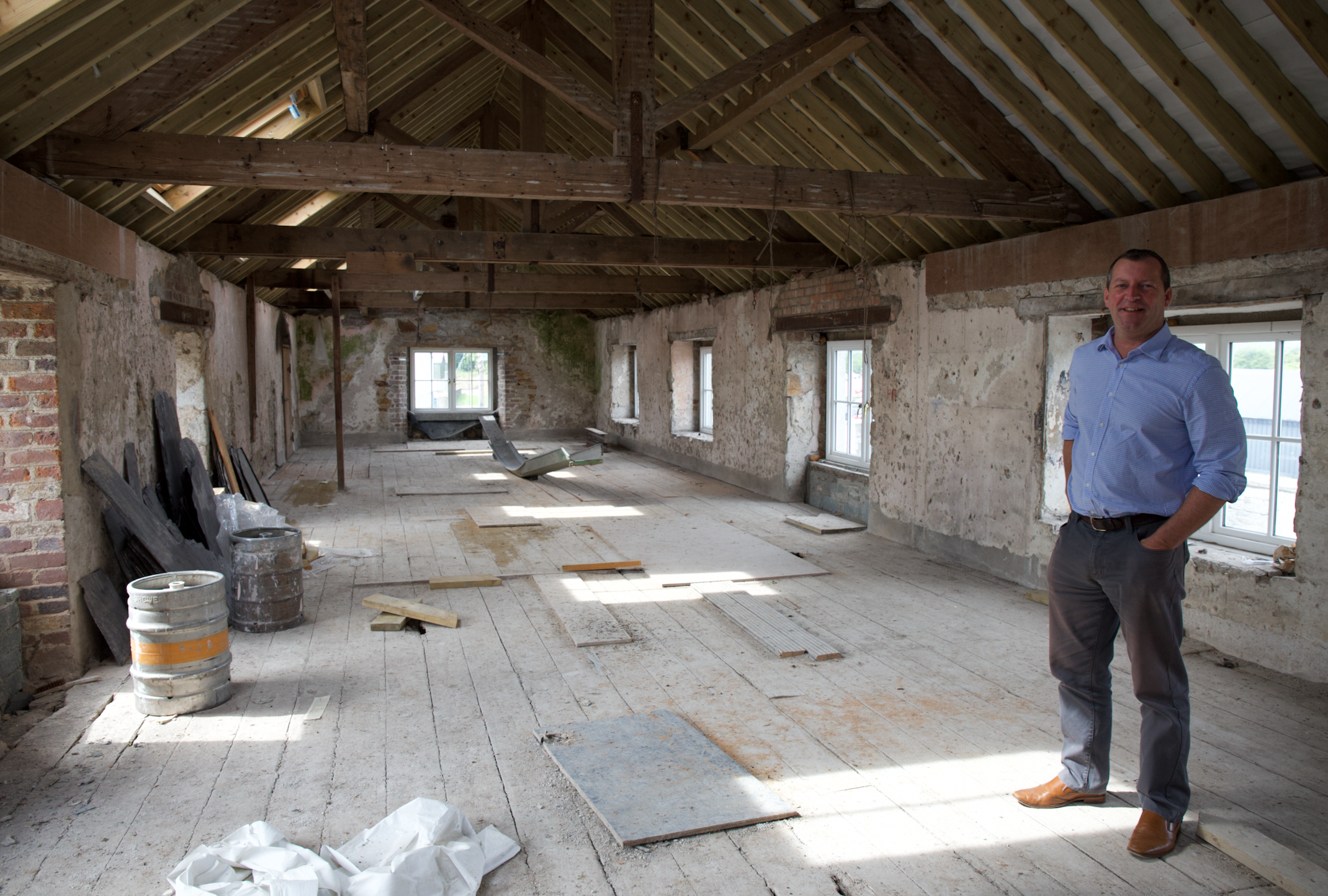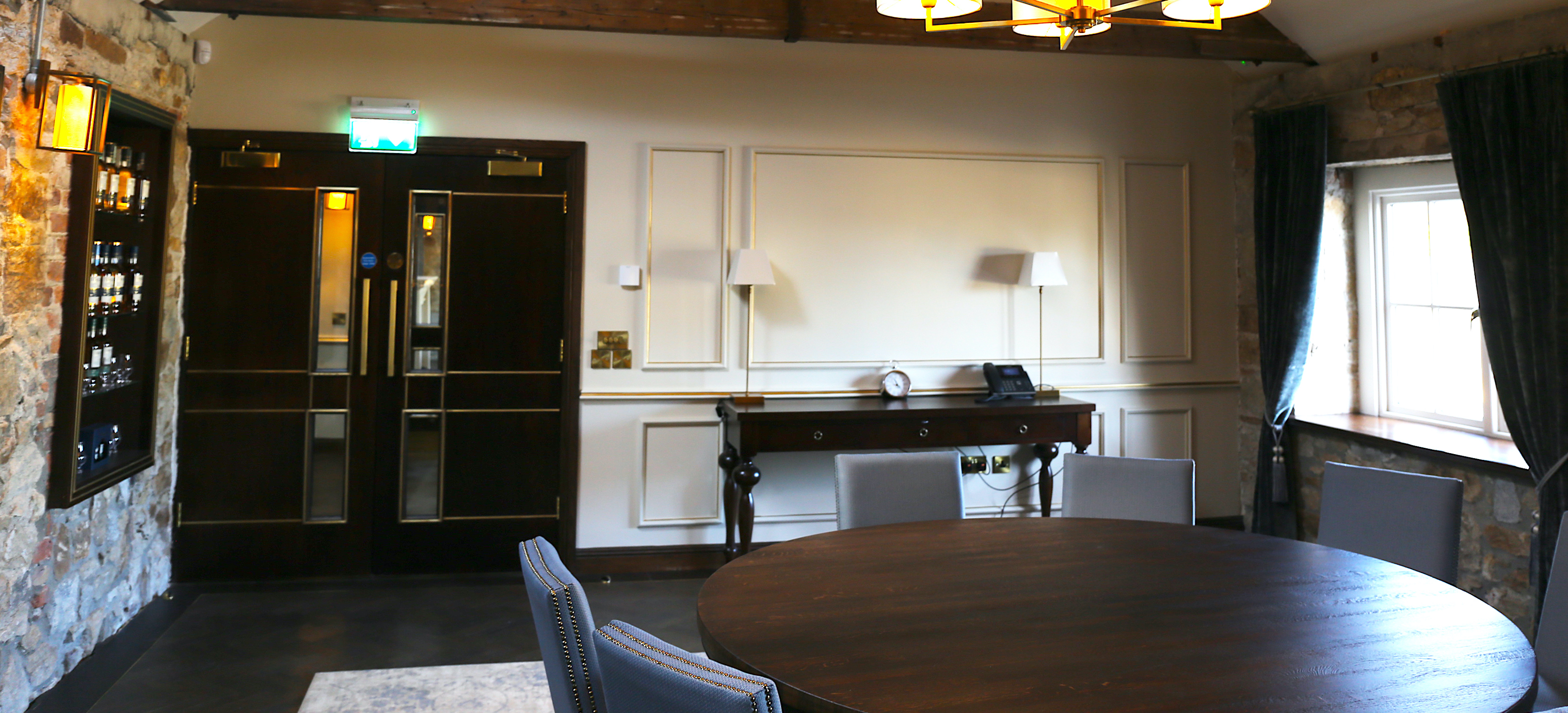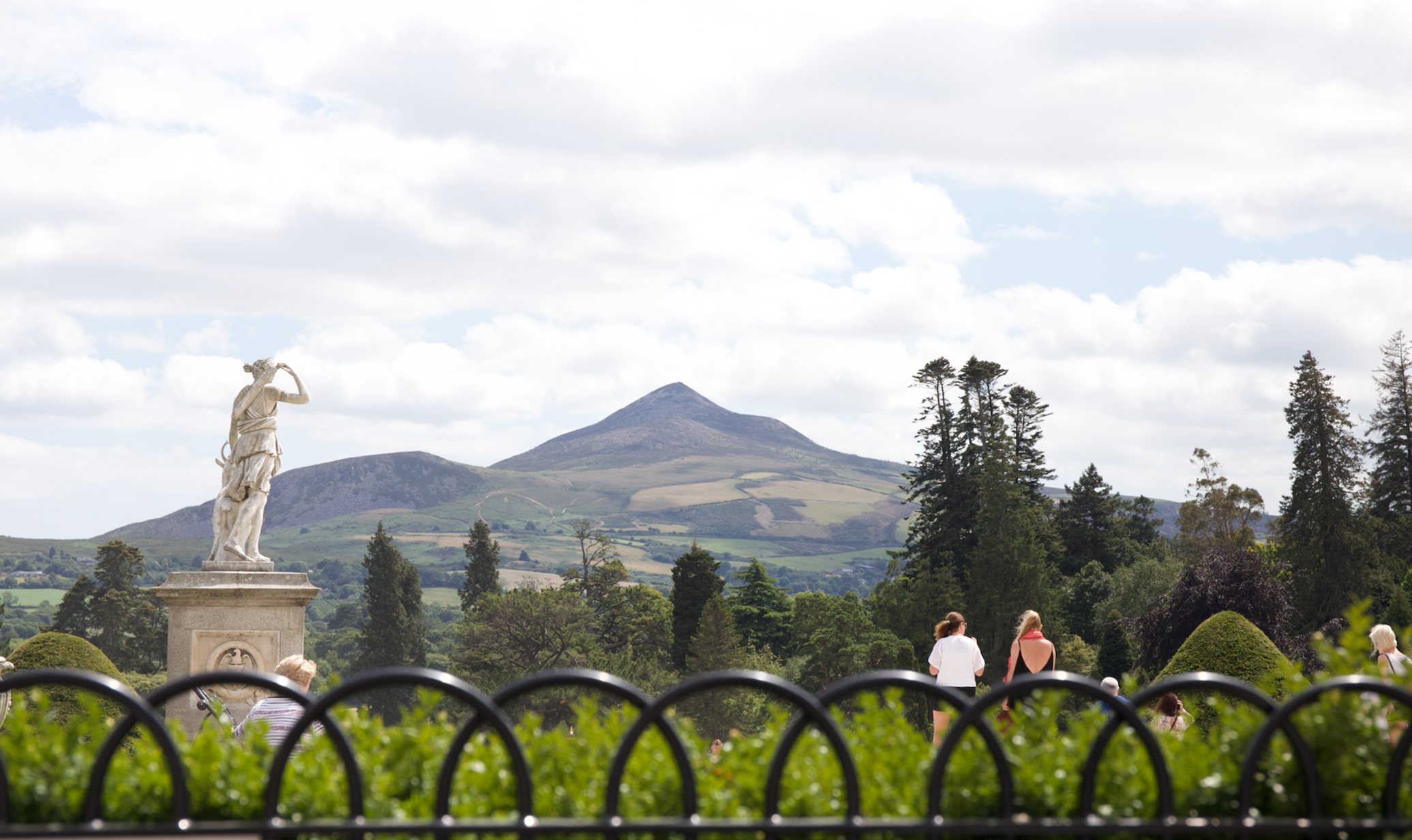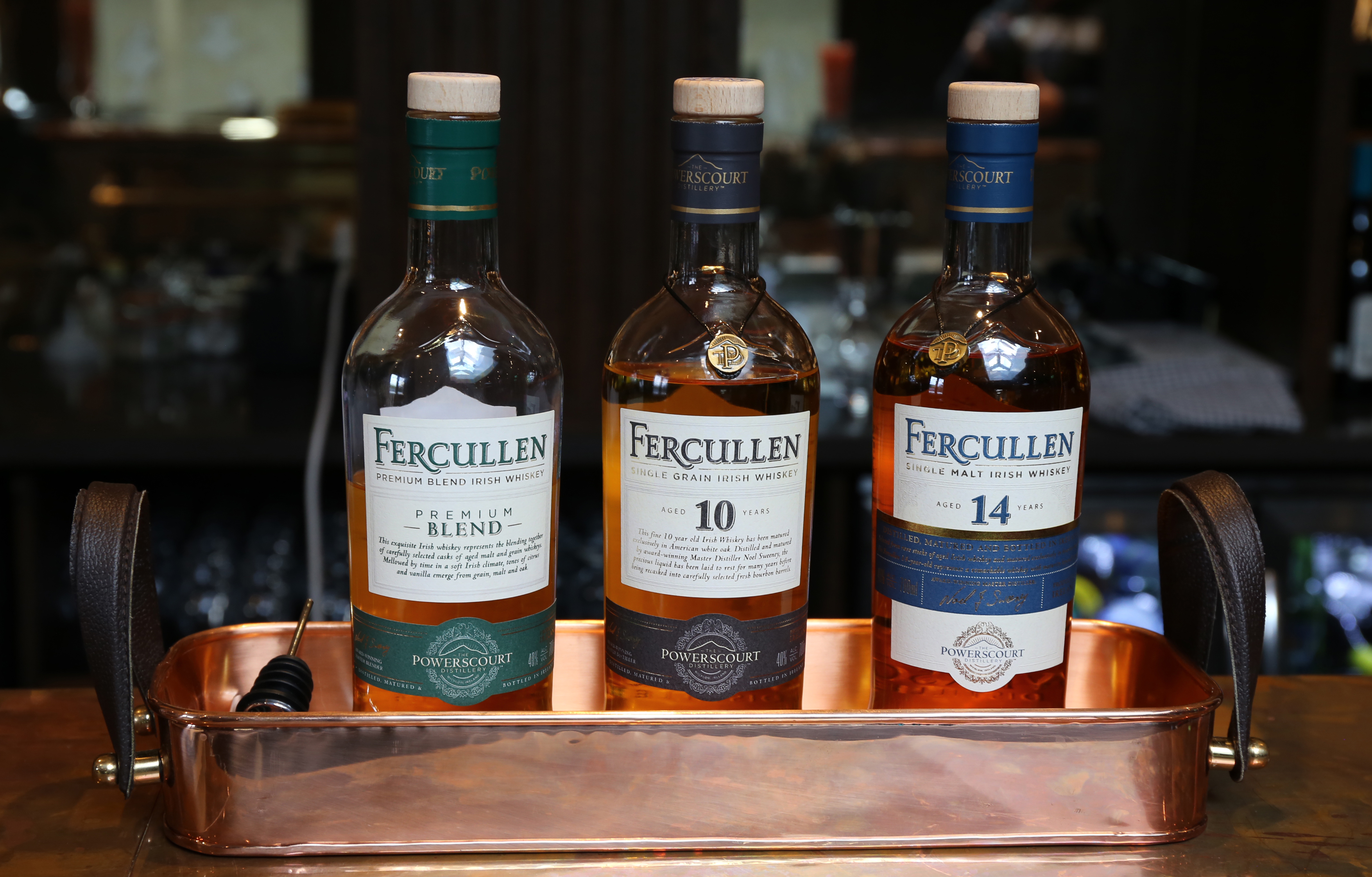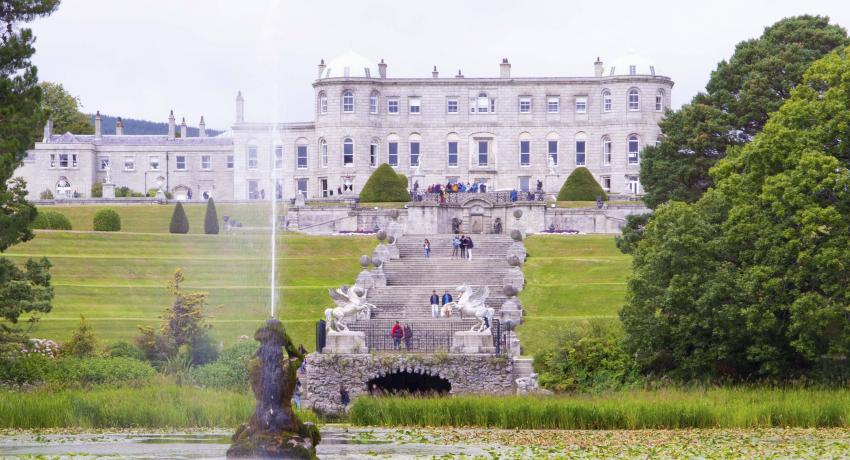A few years ago, Gerry Ginty came back to Ireland from a stint abroad and thought that it would be a nice idea to open a distillery. Come on, how many of us haven’t had a similar idea? The only difference is that he went and did it – and he has done it in some style.
The Slazenger family’s 18th.century Powerscourt House sits in its own vast domain, 25 kilometres south of Dublin, at the foot of the Wicklow hills. One enters through the magnificent gates to the estate near the village of Enniskerry; one proceeds then along the avenue with its expansive view of the singularly beautiful Sugarloaf mountain to the east, one skirts by the edge of the championship golf course (of which there are two), past a Regency-style hotel, in front of the façade of the magnificent, Palladian-style, stately home with its award-winning gardens, and there’s Ireland’s highest waterfall somewhere around here too. A little further on, just past the garden centre, and there you have it: Powerscourt Distillery.
When I last came here, and it wasn’t that long ago, there was not much to see at all in whiskey terms except what you might order at the hotel bar. In fact, the only thing that suggested there was going to be a distillery here was a planning permission notice stapled to the door of an old mill barn. That was the first call on my Whiskey Burn of Ireland, and I was a bit shocked. If they’re all like this, I thought, I might as well go home.
All there was to write about was a dusty yard and a derelict barn from a once-existing mill, and some very optimistic plans that stretched the imagination to say the least.
It was at that moment that I realised I would have to update Whiskey Burn at some point - and in Ireland that would mean bringing out a new edition every few months (hardly practical, say the publishers). So, this is the Powerscourt Distillery update as I pass the gates, pass the golf course, the plush hotel, the stately home, and garden centre: and standing before me is … a fully fledged, 24-million-euro, working distillery. I am amazed. But - hang on - I was here only a few months ago. Or have they put up a hologram of the architect’s impression of the finished thing?
The difference between the dusty yard of then and the extremely impressive, working distillery of now could hardly be more striking. There is still the barn, but it is no longer derelict, restored instead to its former glory - actually, no, way beyond that because barns don’t really do ‘glory’ - and the dusty yard is now covered over by busy production buildings, a spick-and-span visitors centre and distillery offices.
I just manage to catch Alex, who showed me round the yard and barn that first time, as he is rushing off to hold a tasting in Dublin. He hands me over to Claire in the visitors’ centre, and she goes off to find Gerry. At this point I start to wonder which room of the derelict barn I’m in, or which part of the dusty yard, but find it difficult to equate anything much to that previous experience - perhaps I’m just disorientated or have a bad memory. I recall the scene like an abandoned Wild West ranch with tumble weeds rolling across the foreground (which you don’t get at all in Ireland, and so that’s probably not accurate) but the sense of contrast is about right.
Gerry appears presently and offers to show me around. As COO he was responsible for the design and the project managing of the building, distillery and visitors' centre, from concept to delivery. He tells me the story of coming back to his hometown and having the idea, managing to convince Alex, who has connections with the Isle of Arran Distillery in Scotland, and the Slazenger family to join in. It wasn't so straightforward as all that, of course, and after undertaking a redesign of the original business plan before engaging together as 3 founding parties, serious preparations started. Ex-Cooley maestro Noel Sweeney came on board, and from that moment on they must have known they were onto a winner. When the go-ahead was given, in about a year and a half, under Noel’s tutorage, they had the whole thing built, equipped and good to go.
After a quick tour of the ground floor and shop (aha - nice to see copies of Whiskey Burn on sale in the books section) we arrive in a mini-cinema and Gerry puts on a film about the whiskey and the whiskey-making ethos here at Powerscourt. I’m distracted, however, by a certain scent of distilling in the air. I start to wonder if this isn’t 4D – ‘smellevision’, or whatever it’s called. Then at the end of the video, like a magician, Gerry draws the curtain and there behind the screen is a glass door that opens right onto the production floor. That’s impressive. I like smellevision.
We walk on through and here is the whole set-up on the one level, brand new and spotless, from the copper-topped mash tun, gleaming stainless steel washbacks, and three handsome, traditional-shaped, Forsyth’s stills bubbling away industriously at the far end.
Water is sourced from the underlying Wicklow aquifer, amply satisfying their needs of 12-16 thousand litres per mash using locally sourced barley. The distillery boiler runs on biogas, which heats the stills, while the excess is redirected for underfloor heating in the interests of sustainability, something which the new-build Irish distilleries can consider perhaps with greater flexibility than older plants elsewhere.
State-of -the-art it may be, but Powerscourt is not a fully automated distillery, and as if to demonstrate this one of the assistant distillers, James, is standing there looking up with great concentration at the little port holes in the neck of the wash still to see if the bubbles are rising too high. They are just about at the top of the lower window, so I think someone is going to have to turn the burners down a little in a minute. The boss himself is off site today, so I hope his assistants know what they are doing.
The stills go in size from 12.5, 8.25 to 5.5 thousand litres, and double shifts mean they are filling about 75 barrels a week at the moment, and production is forecast at about a million litres of pure alcohol a year.
Here at the spirit safe I am treated to little sips of the unfermented wort and the next stage, the fermented (but hopless) beer, which taste pretty much how you might think barley juice and warm beer should taste like. The new make spirit, though, that is something extraordinary. It’s really sweet and cerealy - at first I think it is like banana on crackers, but then Gerry says, and after that I can’t get it out of my mind: Frosties. It really does taste like Frosties. That takes me back a bit. Haven’t had Frosties for donkeys’ years. I’d forgotten how yummy they were.
Today the production team are making spirit from a 60/40 pot still mash (60% malted + 40% unmalted = Frosties). Powerscourt whiskey is, of course, already available to buy: finished, bottled and sold as ‘Fercullen’ (from the old name for the area around Powerscourt) in various expressions and finishes, like triple-distilled single malt, single grain and blended.
The spirit is matured on-site, primarily in ex-bourbon hogsheads sourced in Kentucky, and though good quality casks may not apparently be as plentiful or easy to find as they used to be, with Noel’s connections in the business I think there’ll be no great problems on that score.
When they come to write the history of the present Irish distilling renaissance in generations to come, certain names will be listed among the immortals, John Teeling, Barry Crocket, and a few select others, and one name that will certainly be among them is Noel Sweeney. Noel - master blender, master distiller, and general master of the trade - is not on-site today, but I did meet him last year at Whiskey Live in Dublin, an affable and genuine character who worked at Cooley making Kilbeggan, the peated Connemara and the grain whiskey Greenore (amongst others - if you have a bottle of Irish whiskey that wasn’t distilled at Midleton or Bushmills, then chances are it’s Noel’s). And in these increasingly crowded if early days of the Irish whiskey renaissance, an undeniable feather in Powerscourt’s cap has to be that the excellent Fercullen range they sell at the moment was actually made by their own distiller (albeit elsewhere) - and for this he gets to sign the bottles.
Well, hats off to Gerry, Alex, Noel and the Powerscourt team, if ever there was a distillery with class, this is it. I’ll put a couple of ‘before and after’ photos on the slideshow at the top of the page, because I remember after that first time here starting up the Vespa, leaving the derelict barn and dusty yard, and that wannabe distillery, with thoughts like the presenter of one of those home restoration TV shows who finishes with an offside to the camera – I wonder if they realise they have probably bitten off more than they can chew. This time, the presenter finishes off with a rather different aside to the imaginary camera, and it’s the sound of chewing that comes from his own mouth as he happily eats his words.

